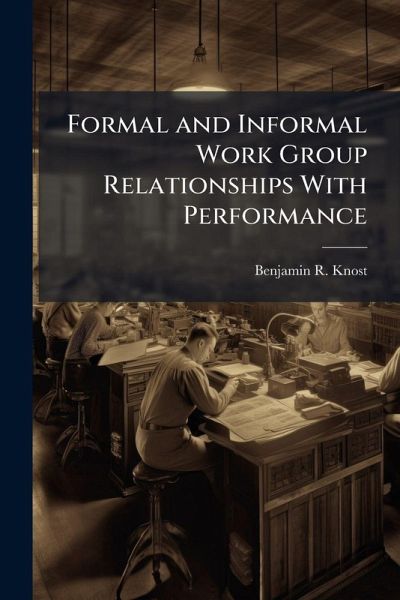
Formal and Informal Work Group Relationships With Performance

PAYBACK Punkte
8 °P sammeln!
Social networks have recently emerged in the management discipline as a unique way of studying individuals and groups in organizations. While traditionally used in the analysis of un-bounded networks, applying social network analysis techniques to bounded work groups and organizational teams has become increasingly popular. Past research has established relationships between in-degree social network centrality and individual performance as well as social network density and overall group performance. This field study, conducted at a military training course, attempted to further refine this so...
Social networks have recently emerged in the management discipline as a unique way of studying individuals and groups in organizations. While traditionally used in the analysis of un-bounded networks, applying social network analysis techniques to bounded work groups and organizational teams has become increasingly popular. Past research has established relationships between in-degree social network centrality and individual performance as well as social network density and overall group performance. This field study, conducted at a military training course, attempted to further refine this social network-performance relationship by modeling characteristics of both the formal and informal work group networks in relation to performance at the individual as well as group levels. A sample of 406 students in 28 groups showed empirical evidence that individual performance is positively related to centrality in the formal social network while a negative relationship was found between performance and centrality in the informal social network. This work has been selected by scholars as being culturally important, and is part of the knowledge base of civilization as we know it. This work was reproduced from the original artifact, and remains as true to the original work as possible. Therefore, you will see the original copyright references, library stamps (as most of these works have been housed in our most important libraries around the world), and other notations in the work. This work is in the public domain in the United States of America, and possibly other nations. Within the United States, you may freely copy and distribute this work, as no entity (individual or corporate) has a copyright on the body of the work. As a reproduction of a historical artifact, this work may contain missing or blurred pages, poor pictures, errant marks, etc. Scholars believe, and we concur, that this work is important enough to be preserved, reproduced, and made generally available to the public. We appreciate your support of the preservation process, and thank you for being an important part of keeping this knowledge alive and relevant.












